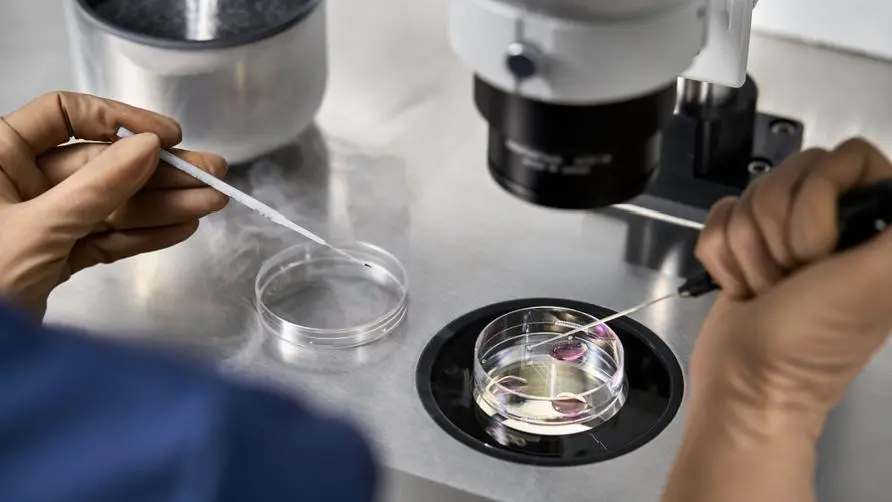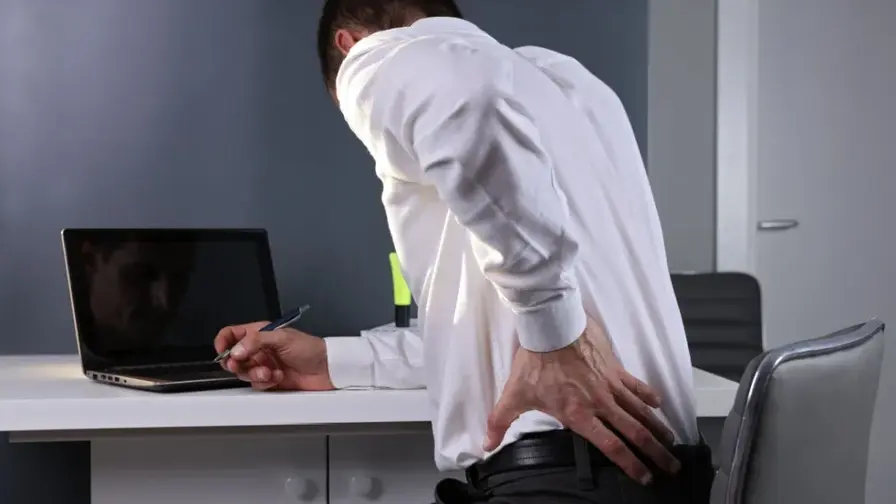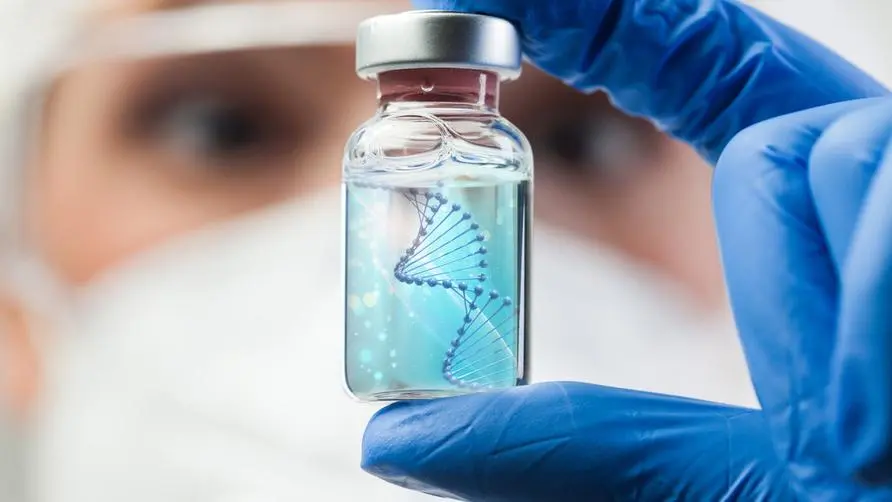3 major joint diseases may lead to "chronic pain"? Pain specialist reveals: There is a chance of recovery without surgery

“Degenerative arthritis” is one of the most common joint diseases among the elderly. Is surgery necessary for degenerative arthritis? What new treatment options are available? In an interview, Dr. Huang Yuhan from the Pain Treatment Center of Shin Kong Goh Huo Shi Memorial Hospital pointed out that degenerative arthritis is divided into four stages. If the disease progresses to the third and fourth stages, artificial joint replacement may be required. Therefore, early treatment is crucial to improve the patient’s mobility. important.
Treatment options for degenerative arthritis? What is “microarterial embolization analgesia”?
Dr. Huang Yuhan pointed out that there are currently many therapies available for the treatment of degenerative arthritis, among which “microarterial embolization and analgesia” (TAME, also known as musculoskeletal embolization therapy) is a special therapy for chronic pain. Embolization agents are injected through tiny catheters. Then, through X-ray angiography, it is introduced into the tiny blood vessels in the joints to prevent abnormal angiogenesis around the joints, thereby achieving analgesic effect.
“Directly applying PRP growth factors to joints is like an “army” launching an attack, attacking wherever there is a problem; microarterial embolization analgesia is like a “water army”, taking the “water route” of blood vessels and causing painful abnormalities. “Eradication of hyperplastic blood vessels!” Dr. Huang Yuhan emphasized that this operation can effectively reduce pain and last for about 2-3 years. The important thing is that it does not require surgery or hospitalization. Because the operation is minimally invasive, it also has small wounds and short recovery time. , lower complication rate and other advantages.
Degenerative arthritis doesn’t necessarily require surgery? Doctor: “This treatment” does not affect the patient’s motor function
Dr. Huang Yuhan said that this surgery is suitable for people with second or third stage degenerative arthritis who have exercise habits or who often need to move their bodies due to work. Other clinical treatments such as nerve block and high-frequency thermocoagulation therapy can also achieve good results, but they are only suitable for elderly people with low activity level and no strenuous exercise.
“Today’s nerve block surgery is to inject peripheral nerves. For example, the nerve in charge of the knee joint is the “genuine nerve”. Because it is a sensory neuron, it will achieve analgesic effect without affecting motor function; as for “high-frequency thermal coagulation” “Therapy” uses electric cautery to block sensory neurons.”
Dr. Huang Yuhan suggested that if you feel that joint pain has affected daily activities such as walking and running, you should seek medical examination as soon as possible. If you have stage II or stage III degenerative arthritis, you should discuss appropriate treatment methods with your doctor. “If the patient If you don’t know much about the condition, it is recommended to undergo imaging examinations, clarify your condition, and discuss treatment with your doctor; now there are a variety of interventional treatments for mild to moderate degenerative arthritis to choose from!”
Can sitting for long periods of time cause chronic pain in office workers? “Situation 1” cannot be relieved even with PRP!
In addition to nerve pain, if pain in muscles, bones and joints is ignored, it may also develop into “chronic pain” that is difficult to cure? Dr. Huang Yuhan pointed out that middle-aged and middle-aged office workers inevitably have the problem of sitting for long periods of time. Long working hours lead to poor posture and are prone to muscle compensation or soreness. If it is not properly treated for more than 3 months, it may form chronic pain, and may easily lead to depression, anxiety, poor sleep quality and other sequelae. For those who engage in “brain-burning” work, it may affect their performance in the workplace.
Many people think that chronic pain caused by shoulder and neck pain is not a serious problem, or they mistake it for other diseases such as frozen shoulder, and thus delay seeking medical treatment. “There was a patient who thought he had frozen shoulder because he couldn’t lift his hands. After an ultrasound examination, he found that his shoulder tendon was ruptured, and the pain didn’t go away for half a year!” Dr. Huang Yuhan suggested that chronic pain problems caused by musculoskeletal problems are best treated thoroughly. Through physical examinations such as X-rays, ultrasound and other instruments, the root cause of chronic pain can be clarified.
Can chronic pain problems be treated through high-concentration platelet plasma proliferative therapy (PRP) intervention to achieve the expected pain reduction effect? Dr. Huang Yuhan explained that PRP mainly repairs and regenerates sports injuries and damaged muscles, bones and joints. Central sensitization caused by post-herpetic neuralgia, trigeminal neuralgia, etc. cannot be effectively relieved even by PRP injections.
Is it easy to develop bone spurs if herniated disc is not treated? How to choose between PRP, PLT, amniotic membrane, and glucose injection?
Joint diseases easily caused by aging and poor posture: intervertebral disc herniation, if not properly treated, may develop into “sciatica” or even “chronic pain”. Dr. Huang Yuhan pointed out that poor sitting postures such as lying down, hanging the waist, and crossing the legs are one of the main causes of intervertebral disc herniation. The herniation of the lumbar intervertebral disc compresses the sciatic nerve root backward, which is more likely to cause sciatica and lead to soreness and discomfort from the buttocks to the soles of the feet. .
“The human spine is a “three-point mechanical structure.” When the intervertebral disc cannot support the spine and the joints begin to degenerate, bone spurs will easily form; the ligamentum flavum will cover the entire spine, causing spinal canal stenosis. When spinal canal stenosis occurs, previously I can walk continuously for 1-2 hours, but now I have to take a break every 10 minutes!”
Dr. Huang Yuhan emphasized that in addition to oral medications, physical therapy and rehabilitation training, regenerative injection therapies such as high-concentration platelet plasma (PRP) injection, high-concentration glucose proliferative injection, amniotic membrane injection and platelet lyophilized crystal (PLT) injection are all treatments for intervertebral disc herniation. Can achieve good therapeutic effects. Both PRP and frozen crystal therapy require blood drawing beforehand, but frozen crystal therapy can produce 10-20 bottles of frozen crystal after a single blood collection, which can be used for multiple treatments and is suitable for patients who require multiple and long-term treatments.
Amniotic membrane injection is obtained from amniotic membrane matrix from healthy donations and injected into the affected area through ultrasound. Compared with PRP therapy, amniotic membrane injection contains a higher concentration of growth factors, and has the advantages of no need to draw blood and stable quality; in addition, for For the treatment of intervertebral disc pain, there is currently also an option of “autologous high-concentration bone marrow concentrate (BMAC)” injection therapy, which has certain effectiveness in relieving pain.
Finally, Dr. Huang Yuhan reminded that if you have joint pain problems and the pain still exists and cannot be relieved after taking any treatment such as taking painkillers, rehabilitation therapy, etc. for more than 1 month, you should go to the pain department as soon as possible to thoroughly clarify the pain. sources and discuss the best treatment options with your physician. “It is recommended that you don’t ‘be your own doctor’. When you notice something is wrong, seek medical treatment as soon as possible. This is the most helpful thing for recovery!”
Further reading:




